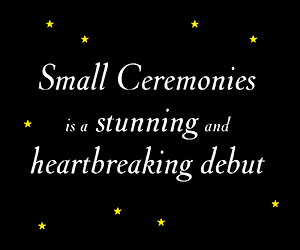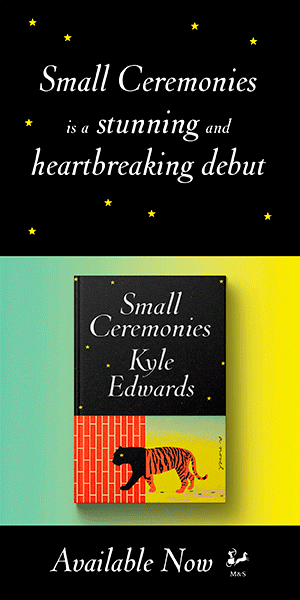“It’s a slow melodic line that climbs up with a swell in dynamics and then it comes back down again with a diminuendo.” Stephen McAdams had been leaning back in his chair in a casual end-of-workday position, but he sat up a little bit as he described a musical phrase at the beginning of Richard Wagner’s Parsifal. “He starts in with the violins but it’s thickened by some bassoons and cellos and violas.”
McAdams is making a point about the role of timbre in the waxing and waning of tension in Western music. Originally from California, he spent twenty-three years in Paris, at the Institute for the Research and Coordination of Acoustics and Music and the French National Centre for Scientific Research. But in 2004, McAdams returned to McGill University in Montreal, where he’d done an undergraduate degree in experimental psychology—and where his first experiment was on the perception of timbre. He is perhaps the world’s leading expert on the subject
“As it starts to swell,” continued McAdams, “Wagner is adding in clarinets, English horn, and, at the peak, he adds in the oboes so he’s making it all very much brighter. Then as it goes down, all these instruments fall out.” Because he has the instruments play the same pitches, Wagner creates a powerful effect by changing the timbre. “So he’s enhanced the pitch contour with a timbral contour. Actually, I am just getting goosebumps just thinking about it”—he paused briefly to laugh deeply—“because he does it so beautifully.”
McAdams’ interest in timbre separates him from most other researchers in his field. Timbre’s role in music has always been underrated, or even ignored, probably because it is an intangible that’s difficult to describe, hard to categorize, and so far, immune to measurement. Pitch, by contrast, is simple to explain, fits neatly into systems such as the pentatonic scale, and can be easily measured in hertz. It’s also overtly mathematical. “Timbre has all kinds of dimensions, and it’s much more fluid and more difficult to conceptualize unless you tie it specifically to instruments,” said McAdams. “But even a given instrument has got this whole universe of timbre that it can occupy.” An instrument’s timbre can vary depending on other attributes such as pitch or dynamics. A clarinet, for example, has a round, luscious sound in the low registers, but it gets much more piercing in the high registers.
Even the definition of timbre is a matter of debate. Google it and you’ll see that most sources describe timbre as the tone colour of an instrument. But that ignores many other attributes such as attack quality, which is how the start of the first note sounds as it moves from silent to full volume. Should you ever get to meet McAdams at a cocktail party and happen to ask what timbre is, he’d say: The thing that distinguishes different musical instruments. His more formal definition: Everything that distinguishes two sounds that are the same in pitch and loudness and spatial position and duration. Though, as he added, “that leaves a whole bunch of stuff.”
*
I also asked Paul Swoger-Ruston to explain timbre to me. A former guitarist in King Apparatus, a respected Canadian third-wave ska band, he has a Ph.D. in theory and composition and teaches at Ryerson University in Toronto. Swoger-Ruston is convinced timbre is a lot more important than people realize. In fact, he believes it’s probably what we’re most sensitive to when we listen to music. He offered two definitions for timbre. The first: those elements of a sound that distinguish it from another. The second: the waste bucket for everything we can’t describe in music.
Unsatisfied, I asked my friend (and fellow Hazlitt contributor) Chantal Braganza, who is married to a jazz musician. She said that if music had a smell, that would be its timbre. This idea appealed to me, but I wondered if an even better way to put it might be to think of timbre as music’s terroir.
In wine, terroir is the characteristic flavour shaped by where the grapes grew, including the soil, the geography, the topography, and the climate. In music, different instruments have different timbres the same way that two grapes have distinct tastes. But more than that, two guitars made by different luthiers have their own individual timbres, and two musicians playing the same guitar will have different timbres.
“It’s most blatant in the identity war that is high school, but music never stops being a badge of recognition."
McAdams laughed when I suggested that timbre was music’s terroir. But he didn’t call it a completely stupid notion. In fact, he pointed out that there were a lot of similarities between the way we describe the taste and smell of wine and the way we describe the timbre of an instrument. Without a clear lexicon, we have to borrow vocabulary from elsewhere when we talk about these things. Oenophiles may describe a wine by comparing it to flavours such as cherry, coffee, or chocolate and sometimes to something we wouldn’t want to drink such as leather or charcoal. With timbre, the descriptors tend to be abstract and often borrowed from the tactile (warm, cold, rough) or visual (bright, dark) senses. The absence of a strict coding system means that some characterizations are noteworthy for their inventive evocativeness: one of McAdams’s research subjects described a sound as being like someone slapping a steak on a corrugated tin roof.
The lack of respect for timbre is especially surprising given that we hear it all the time. “What is speech?” McAdams said. “Speech is timbre.” The unique timbre of my voice—the attack characteristics, my consonance, the colour of my sound and how it all changes over time—is based on both nature (the physiology of my head, nose, mouth, and throat) and nurture (where I carry tension in vocal production, habits of speech, and dialect). My friends recognize me immediately on the telephone or, because I have a notoriously loud voice, before they even see me in a roomful of people. It’s my terroir.
*
Naturally, after hearing McAdams talk about Parsifal, which I was not familiar with, I had to hear it for myself. I found it on YouTube and, even on my first listen and despite being far from an expert in opera, I immediately understood why the piece moved him so much. Goosebumps are a physiological response to music for some people, though rarely one I’ve experienced. But I could feel the tension build and then fall away. I felt shivers in my spine.
The power of timbre is something we are (or should be) reminded of when we go to the movies. “Why do they use these low contrabasses and bassoons,” McAdams said, dropping his voice low, “in the theme for Jaws or those high, screechy violin sounds”—here he made high-pitched squeaks—“in Psycho. All that’s timbral.”
Another way to think about timbre is by comparing instruments. In an old stand-up bit, Steve Martin strummed the banjo and mused, “You just can’t sing a depressing song when you’re playing the banjo . . . You can’t just go, ‘Oh, death, and grief, and sorrow, and murder.’ . . . When you’re playing the banjo, everything’s okay . . . I always thought the banjo was the one thing that could have saved Nixon.” And in “You Just Can’t Play a Sad Song on a Banjo,” Willie Nelson sang that violins are sweet and steel guitars are thrilling, but nothing beats banjos for fun.
“The twentieth century was really about explorations in timbre.”
Banjos have bright timbres and the plucked strings have a short sustain, which encourages musicians to play them fast, according to Ohio State University’s David Huron. You aren’t likely to hear sad songs played on piccolos either, because of their high pitch and bright sound. Musicians seeking the melancholy might want to try a cello. Because of its low range and sustained pitches, it can be played slowly and quietly. Huron’s study found that part of the reason we may consider some instruments sad is that they have some of the same timbre—quieter, slower, more “mumble-like” articulation, darker—that convey sadness in speech.
Some instruments generate different emotions depending on how they’re played. Brass instruments deliver a much brighter, brassier sound when played loud than when played softly. “One of the powerful things about a brass crescendo,” said McAdams, “is it’s not just getting louder, it’s also getting much brighter at the same time. So that’s why it’s a really effective emotional device in orchestral music.”
*
I checked a textbook to see what it had to say about timbre. Not much. According to the index in Understanding Music, the word appears on two pages and is defined as a synonym for tone colour, which appears on a few more pages. But timbre has deep roots in Western classical music. During the Middle Ages and Renaissance, composers didn’t specify what instruments should play the music. It was all about pitch, and it didn’t really matter what instruments the musicians used—they just performed with what they had. But starting in the Baroque period, some composers, notably Bach and Vivaldi, began to specify the instrumentation as they sought certain sounds and experimented with different combinations of them. Timbre, in other words. Vivaldi’s The Four Seasons, for example, used specific string instruments to convey the sounds of the seasons and nature.
This playing around with the possibilities came at a time when instrument makers were doing some of their own inventing, giving the composers more options. Later, Haydn, Mozart, and Beethoven worked with orchestration, and in the latter half of the nineteenth century the size of orchestras grew and composers became increasingly concerned with what they could get out of each instrument. Meanwhile, the artisans who made instruments kept refining their products to elicit new and different sounds. At the turn of the twentieth century, Claude Debussy famously worked with timbre. Many people called his compositions Impressionism because they seemed to be the aural equivalent of what the Impressionist painters were doing (though, predictably, he hated the term). After that came Edgard Varèse and his “organized sound,” Arnold Schoenberg and serialism, minimalism, and the French spectral school. According to Swoger-Ruston, “The twentieth century was really about explorations in timbre.”
As venues changed, so did music. In the Middle Ages, musicians often performed in Gothic cathedrals and other stone-walled places as part of religious functions. “The reverberation time in those spaces is very long—more than four seconds in most cases—so a note sung a few seconds ago hangs in the air and becomes part of the present sonic landscape,” writes David Byrne in How Music Works. “A composition with shifting musical keys would inevitably invite dissonance as notes overlapped and clashed—a real sonic pileup.” Several distinct timbres would have created their own sonic smash-up. So Gregorian chant, which was monophonic—a single melodic line with no harmony or countermelody—also required the singers to match timbres. Music became more complex as it moved to concert halls, opera houses, and palace ballrooms. Larger orchestras may have been a result of the need to resonate more in ballrooms full of dancers. And as music became louder, it allowed for more variety in timbres.
If classical composers explored timbre, popular music, which is often played in even less controlled environments, became all about timbre. The high nasally voice that we hear in early country and early blues is probably a function of playing in noisy juke joints without microphones. “Those tones really cut through the audience,” said Swoger-Ruston. “So shaping your voice for projection ends up creating a timbral quality to that music.” Similarly, as rock stars began playing large venues such as hockey arenas, the subtleties of harmony, if there were any, became lost. Byrne says the sound in CBGB, the legendary New York City club where he both listened to and played music, was remarkably good. “The amount of crap scattered everywhere, the furniture, the bar, the crooked uneven walls and looming ceiling made for both great sound absorption and uneven sound reflections—qualities one might spend a fortune to recreate in a recording studio.” And with no reverberation, the audience could hear every detail of the music, as long as it was played loud enough to overwhelm the unruly crowd. Think about that the next time you listen to “Psycho Killer,” the first Talking Heads hit.
Timbre is even more crucial in contemporary genres such as electronic dance music and rap. EDM, said Swoger-Ruston, is really “experimentation with timbre.” The widespread use of sampling means the sample, not the note, is increasingly the basic unit of music.
Ever since nineteenth-century Romanticism, we’ve had this idea that the musician is supposed to be an individual. Guitarists create their own unique sound depending, among other things, on where they’re plucking the strings and at what angle. And they are increasingly playing with effects boxes and other gadgets. One of McAdams’s favourite guitarists, The Edge, is forever changing the timbre of his sound with such technology. “That’s a whole timbral universe that he’s trying to use that increases the emotional impact of what he’s doing,” said McAdams. “So he’s controlling pitch, he’s also controlling timbre a little bit with the way he plucks, but he’s controlling timbre a lot with all of his effects boxes and things like that.”
Nothing is as distinctive as the human voice, so it’s no surprise that vocal timbres would become so pivotal in popular genres. Folk music, for example, is really about the individuality of the voice, often accompanied by guitar playing that is little more than functional and supportive. “Certainly just having a stripped down texture of guitar and voice is a unique timbral condition,” said Swoger-Ruston. He also believes that 1960s rock is built on intense layers of texture and timbre almost to the point of saturation. But once again, the vocal timbre is crucial. There aren’t too many big singers from that genre that we can’t identify quickly from their voice, he said, adding that a lot of that music relies on similar tools—the same chords and harmonies—and only small differences in melodies. So timbre is the easiest way to create something unique. “It’s these voices with real character to them and maybe you hear the real person behind them.”
A vocal timbre can also reveal economic and cultural background. Some singers, especially in the early periods of commercial popular music, were encouraged to either accentuate their timbre—including accent, diction, ornamentation, and register—or to abandon what occurred naturally for them, in the interest of appealing to a wider or different audience. In the late ’50s and early ’60s, Patsy Cline weakened her accent and strengthened her vibrato to appeal to new listeners as the Nashville Sound gained fans.
The relationship between timbre and class is also a factor in the splintering of musical culture that began in the ’50s and accelerated in the following decades. “Musical subcultures exist because our guts tell us certain kinds of music are for certain kinds of people,” writes Carl Wilson in Let’s Talk about Love: A Journey to the End of Taste. “It’s most blatant in the identity war that is high school, but music never stops being a badge of recognition. And in the offhand rhetoric of dismissal—‘teenybopper pap,’ ‘only hippies like that band,’ ‘sounds like music for date rapists’—we bar the doors of the clubs we don’t want to claim us as members.”
*
But here’s the thing: since most of the genres we fight over are built on the structures, harmonies, and basic forms of early popular music, the only way to distinguish, say, country rock from honky-tonk, or psychedelic rock from heavy metal, is by timbre. This diversity in timbre coincides with the fracturing of the popular music audience—and the vehemence with which listeners defend their favourite genres.
A common misconception is that timbres are just carrying melodies and rhythms, but instrumentation can alter our perception of harmony. Change the instruments and the piece of music is not going to sound the same. It can sound more or less dissonant, for instance, and that ebb and flow of dissonance and consonance is the underlying experience of harmony. Timbre carries a lot of that information and we process it surprisingly quickly, which is why we can sometimes recognize a song in as little as a quarter of a second, long before we even hear the melody.
And still we don’t talk much about timbre. “If you look at music theory, they talk about pitch and harmony, they’ll talk about things like rhythm and meter,” McAdams said. “After that it gets into things like voice leading and counterpoint and harmony. And they never, ever talk about timbre.”
If someone could find a way to measure timbre, we’d likely take it more seriously. And McAdams is working on just that. It’s not easy because timbre has so many dimensions. In one study, his lab analyzed over six thousand sounds from a musical database and found around ten different classes of acoustic parameters that are independent of each other. Using that model, there might be as many as ten dimensions to timbre. Capturing it mathematically will require quantifying attributes such as brightness, attack time, effective duration and noisiness. Then it might be possible to come up with the global measure, but McAdams has a lot more experiments to do before he gets there.
And that might not even be the best approach. Another possibility is that we aren’t perceiving music in terms of dimensions but as a complex spectromorphology, an electroacoustic term for the sonic footprint of a sound spectrum as it changes over time. With a trumpet, for example, there’s a little high-frequency energy with the attack, and then primarily the low frequencies come out first and the high frequencies come out later. And when the sound goes away, the high frequencies go first and then the low frequencies. Capturing all that information mathematically would be a difficult challenge indeed.
If measuring the timbre of instruments will be hard, imagine trying to do it for human voices. That would take us into snowflake territory (one reason McAdams has done little research into vocal timbres). We don’t fully understand how people react to different vocal timbres, whereas we do know how most listeners respond to a beat that’s above a resting heart rate or to syncopated rhythms or big jumps in melodies. “We have simple ways to describe where the emotional content sits in those parameters,” said Swoger-Ruston. “But with the human voice it’s complex and so many things are going on.”
Even if McAdams can’t solve the measurement puzzle, maybe his work will help more people realize that the better we understand timbre, the better we will understand music—and how we really perceive it.
This is an excerpt from Tim Falconer's Bad Singer: The Surprising Science of Tone-Deafness and the Way We Hear Music, out May 14th from House of Anansi.






